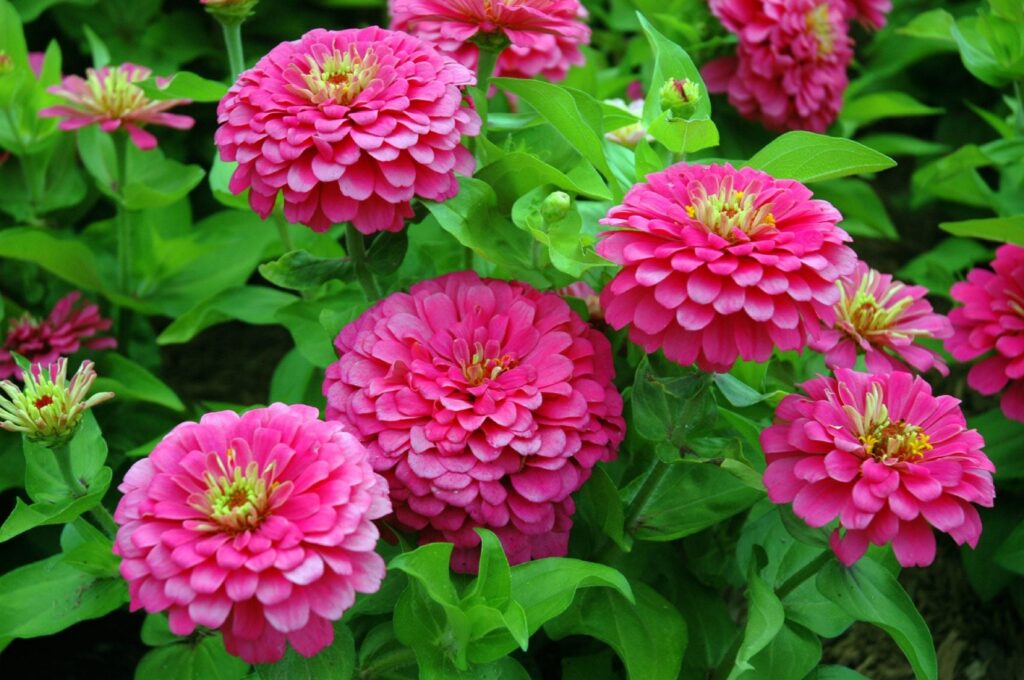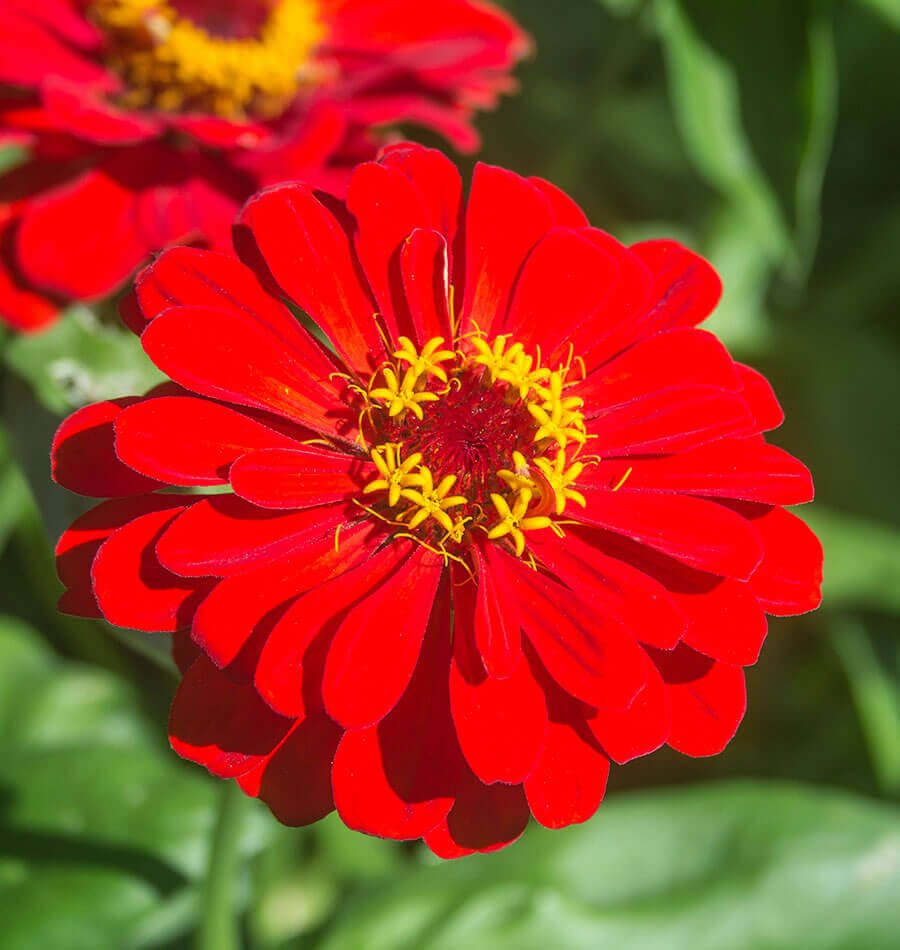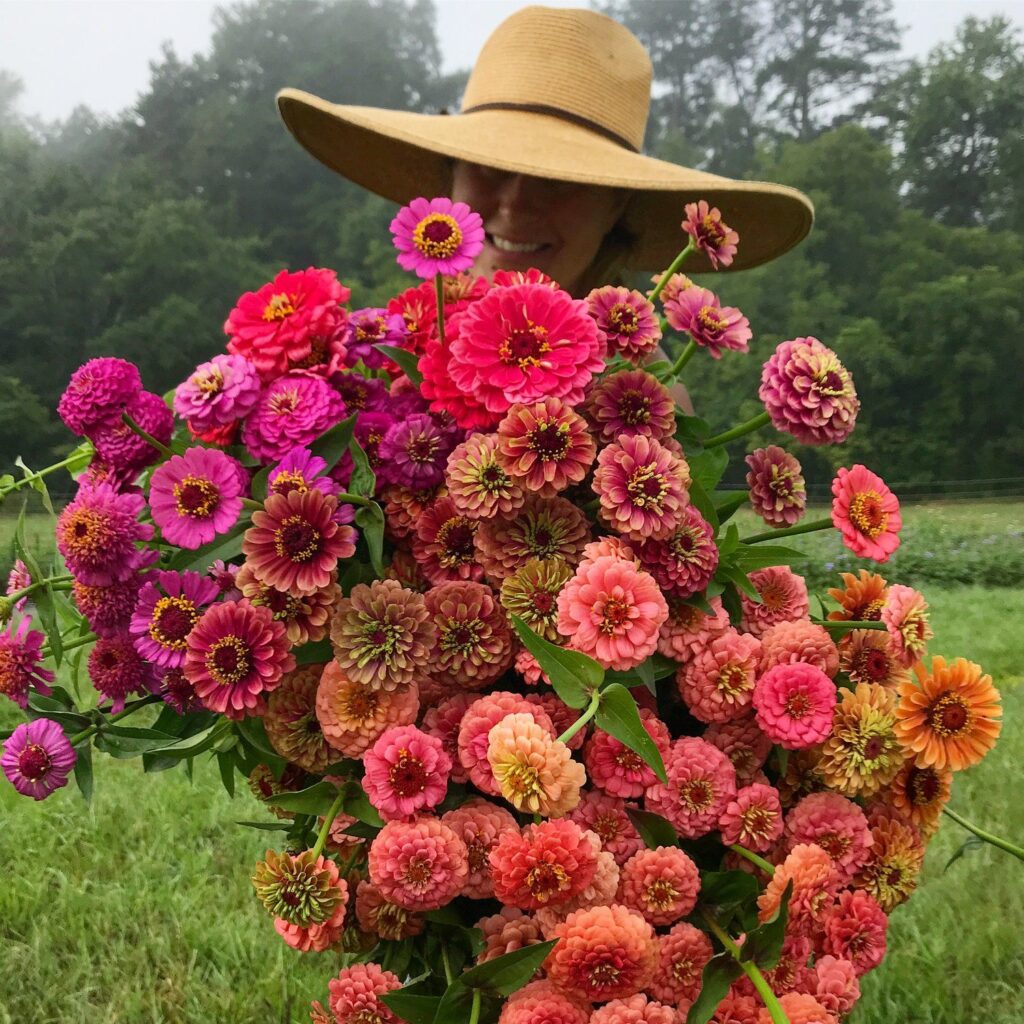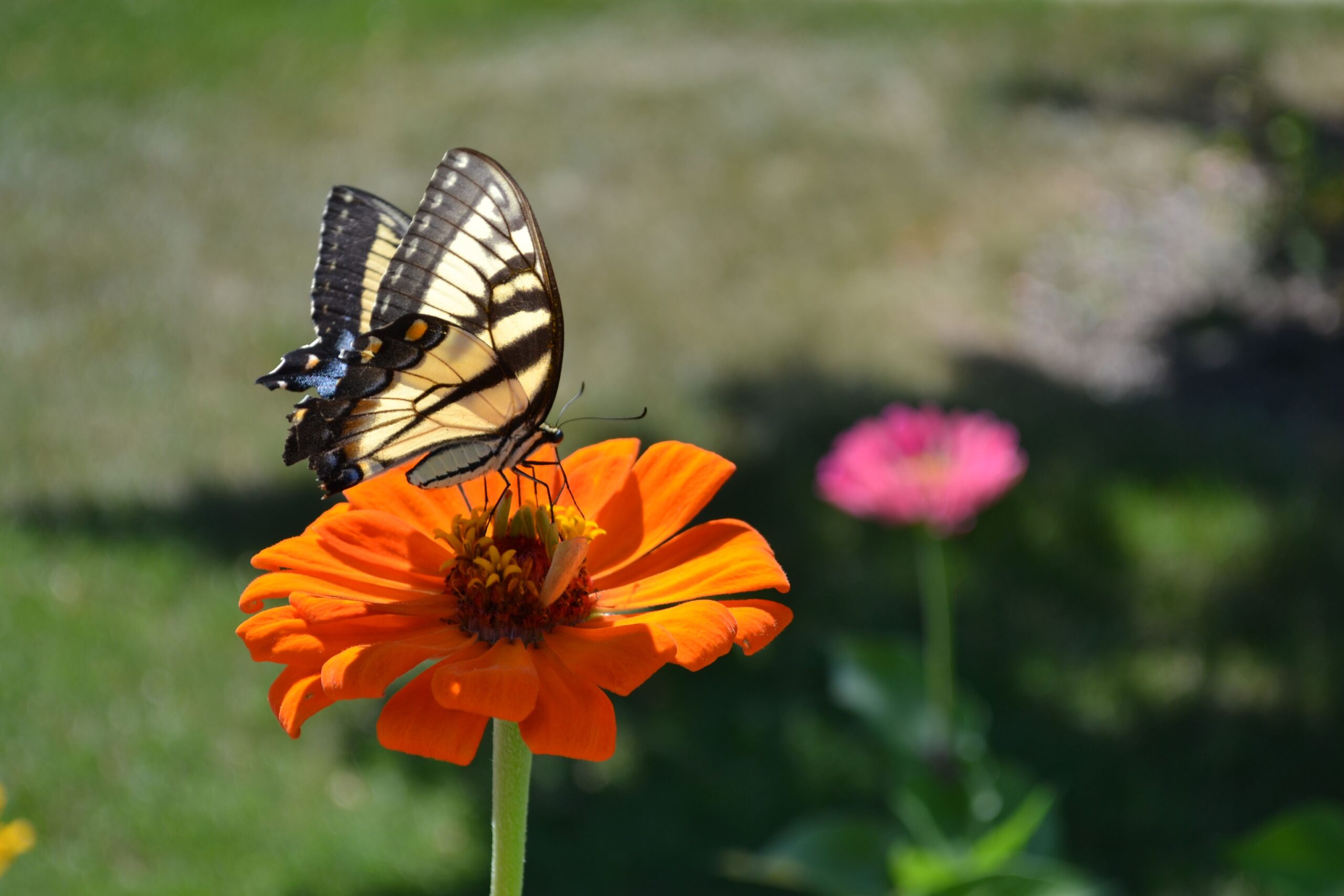The world of butterfly gardening wouldn’t be complete without the vibrant and hardy Zinnia, a plant that’s as colorful and varied as the butterflies it attracts. Zinnias, belonging to the genus of the same name within the daisy family, Asteraceae, are native to the grasslands of North America, South America, and Mexico. However, with their showy blooms and easy cultivation, they’ve found a home in butterfly gardens across North America.

Delightful Diversity
Zinnias offer a stunning array of choices for the discerning gardener. From the miniature ‘Thumbelina’ to the giant ‘Big Red,’ Zinnias can range in height from a compact six inches to a towering four feet. The flowers are equally diverse, available in a riotous mix of colors—magenta, crimson, orange, pink, yellow, lilac, and even lime green. They come in a variety of shapes too, with petals that can be single and daisy-like, or numerous, forming a dense dome.

Butterfly Bonanza
Zinnias are not just pleasing to human eyes. Their nectar-rich flowers are a siren call to butterflies, enticing a range of species, from Monarchs and Swallowtails to Painted Ladies. Zinnias are known as composite flowers, meaning that each flower head is a cluster of many tiny flowers, or florets. This arrangement provides an easy-to-access banquet for butterflies, and gardeners can often spot these delightful creatures happily perched on a Zinnia, sipping nectar.

